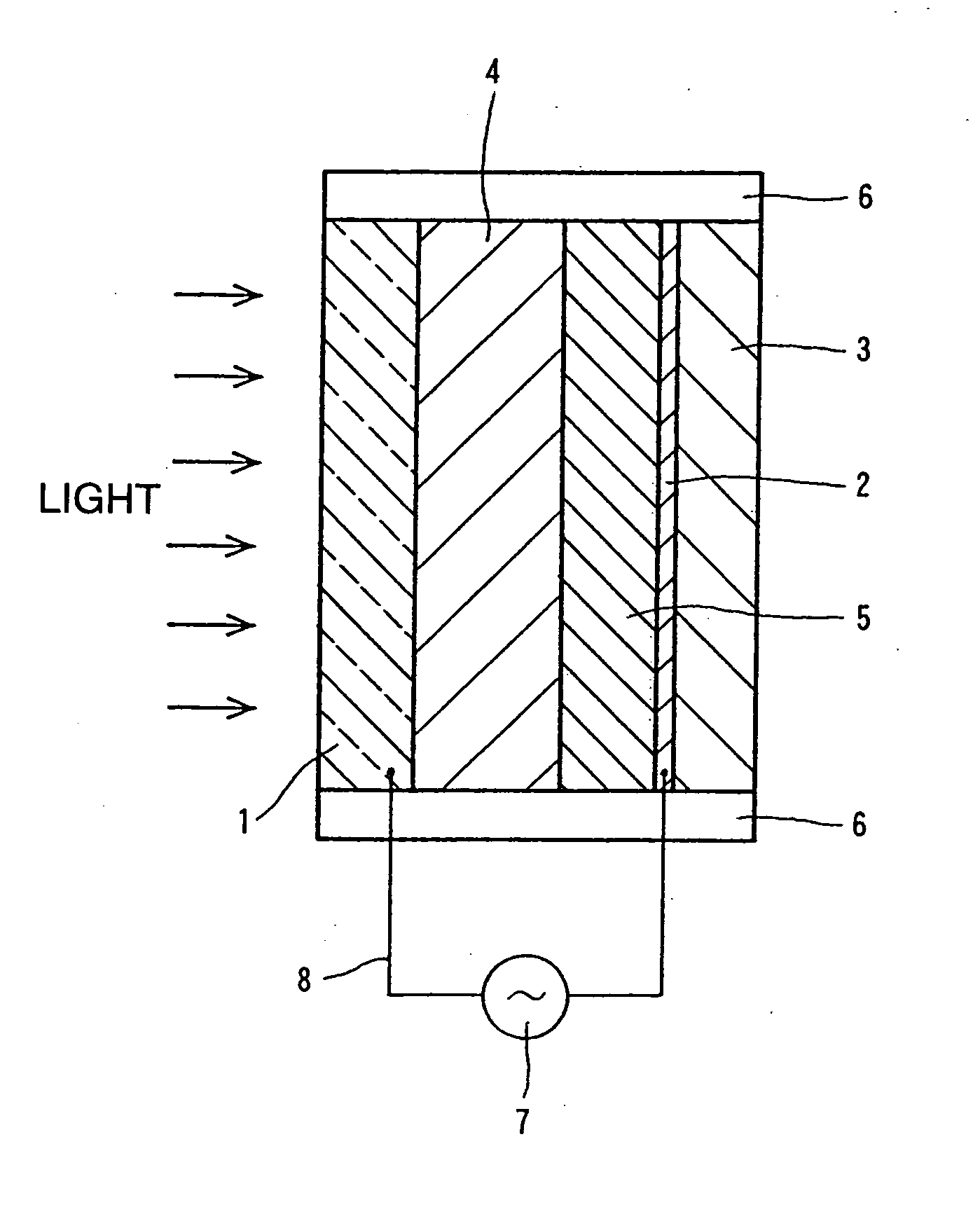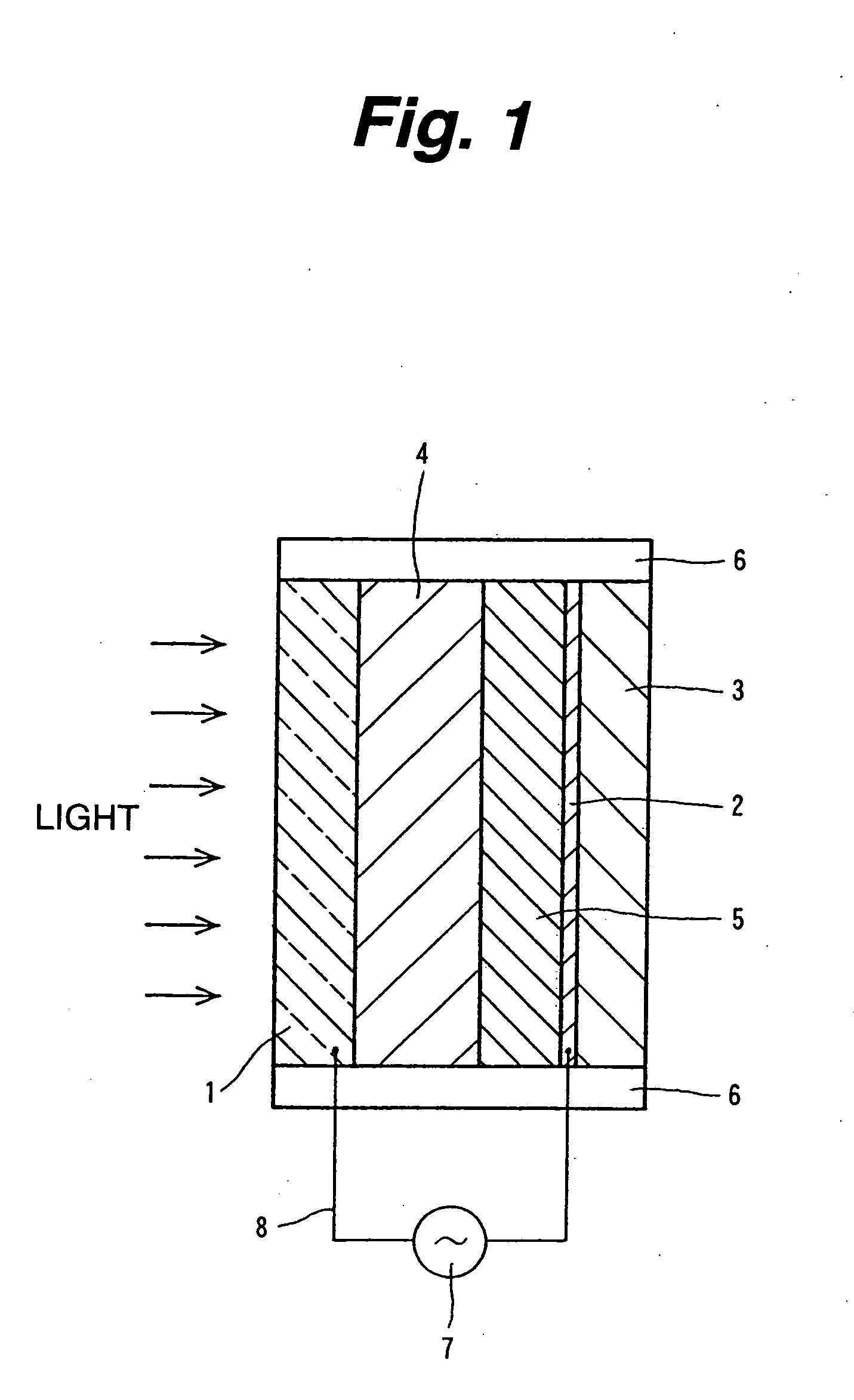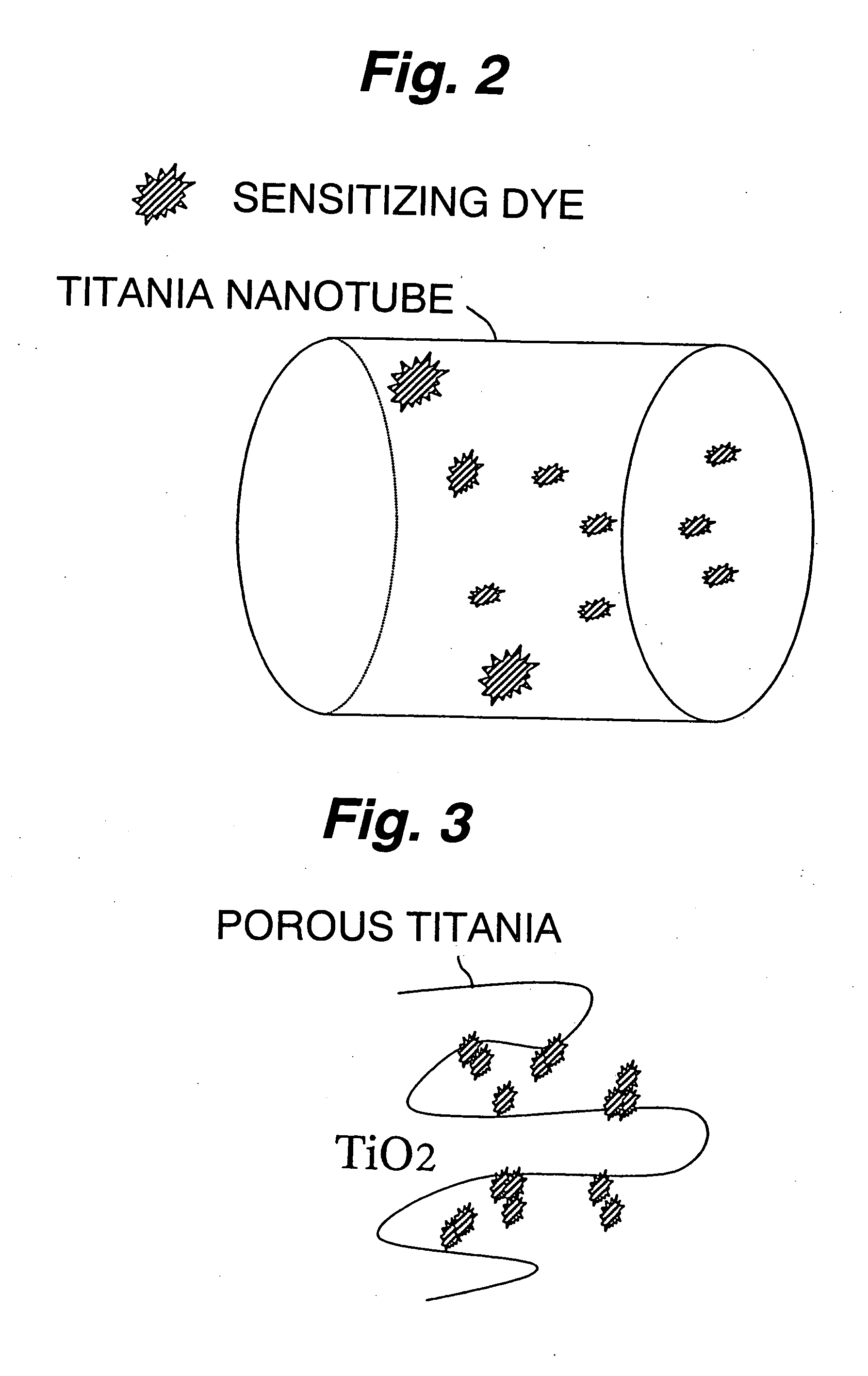Dye sensitization photoelectric converter and process for fabricating the same
a photoelectric converter and dye sensitization technology, applied in the direction of sustainable manufacturing/processing, final product manufacturing, electrochemical generators, etc., can solve the problems of low photoelectric transfer efficiency of amorphous silicon solar cells, needing an evacuation process for manufacture, and inability to absorb sensitizing dye particles, etc., to suppress association of sensitizing dye particles, enhance photoelectric transfer efficiency, and increase the quantity of sensitizing dye absorbed
- Summary
- Abstract
- Description
- Claims
- Application Information
AI Technical Summary
Benefits of technology
Problems solved by technology
Method used
Image
Examples
embodiment
[0060] Referring to Japanese Patent Laid-open Publication JP-H10-152323, titania nanotubes were fabricated as explained below. Commercially available crystal titania (mean grain size: 20 nm; specific surface area: 50 m2 / g) was immersed into 40 wt % sodium hydroxide solution and left to react in a hermetic container for 20 hours at 110° C.
[0061] Next referring to H. Arakawa, “Latest Techniques of Dye-sensitized Solar Cells” (C.M.C.) p. 45-47 (2001), paste of titania nanotubes was prepared as follows. Titania nanotubes were dispersed in an ethanol solution to contain 11 wt % of titania nanotubes. Then, the solution was added with PEO having the molecular mass of 500 thousands, and mixed homogenously in a planet ball mill to obtain a viscosity-enhanced paste of titania nanotubes.
[0062] The paste of titania nanotubes obtained was coated on a fluorine-doped conductive glass substrate (sheet resistance: 30 Ω / □) over the area of 1 cm×1 cm by screen printing, then maintained at 450° C. fo...
PUM
| Property | Measurement | Unit |
|---|---|---|
| diameter | aaaaa | aaaaa |
| diameters | aaaaa | aaaaa |
| specific surface area | aaaaa | aaaaa |
Abstract
Description
Claims
Application Information
 Login to View More
Login to View More - R&D
- Intellectual Property
- Life Sciences
- Materials
- Tech Scout
- Unparalleled Data Quality
- Higher Quality Content
- 60% Fewer Hallucinations
Browse by: Latest US Patents, China's latest patents, Technical Efficacy Thesaurus, Application Domain, Technology Topic, Popular Technical Reports.
© 2025 PatSnap. All rights reserved.Legal|Privacy policy|Modern Slavery Act Transparency Statement|Sitemap|About US| Contact US: help@patsnap.com



